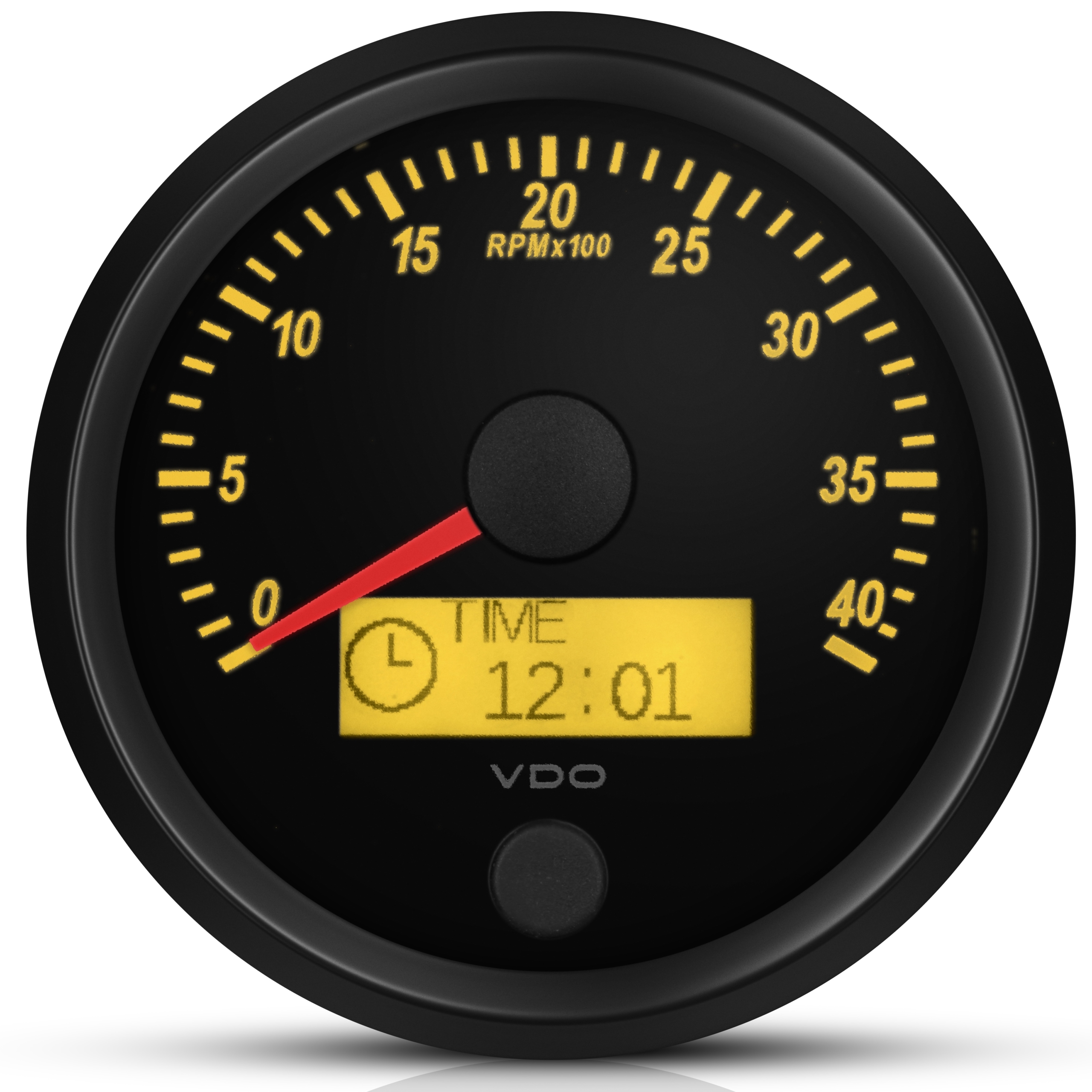Leading Reasons Why Every Vehicle Driver Requirements a High-Quality Tachometer
Leading Reasons Why Every Vehicle Driver Requirements a High-Quality Tachometer
Blog Article
The Relevance of a Tachometer in Checking Engine Speed and Efficiency in Automotive Applications
In the realm of automobile design, the tachometer stands as an essential tool in the chauffeur's arsenal, offering a straight window into the inner workings of a car's engine. Beyond its function as a simple scale of transformations per min (RPM), the tachometer serves as a crucial tool for lovers and professionals alike, providing real-time understandings into engine performance and health and wellness.
Significance of Monitoring Engine RPM
Keeping an eye on engine RPM, or changes per minute, is a crucial aspect of automotive upkeep and performance evaluation. Engine RPM directly associates with the rate at which the engine's crankshaft revolves, indicating just how swiftly the engine is running - tachometer. By keeping track of RPM, mechanics can evaluate the health and wellness of the engine, identify potential issues, and fine-tune performance. An irregular RPM reading may signal issues such as engine misfires, malfunctioning trigger plugs, or concerns with the fuel delivery system. Continually high RPM readings can indicate aggressive driving behaviors or the demand for a greater gear shift to boost gas effectiveness.
Moreover, monitoring engine RPM is necessary for performance analysis in auto racing and high-performance vehicles. In summary, keeping track of engine RPM is not only crucial for finding issues but additionally for optimizing engine efficiency in numerous auto applications.

Advantages of Real-Time Information
In automobile applications, real-time information plays a crucial function in providing instant insights right into the performance and condition of the vehicle. By continually keeping an eye on numerous parameters such as engine rate, temperature level, fuel usage, and much more, real-time information supplies various benefits that contribute to improved efficiency and safety and security on the roadway.
One significant benefit of real-time data is its capacity to alert vehicle drivers and specialists to any type of anomalies or problems without delay. This aggressive technique makes it possible for fast identification of potential troubles, enabling prompt interventions to stop additional damage or malfunctions. Furthermore, real-time information facilitates performance optimization by providing instant feedback on driving routines and engine effectiveness. Vehicle drivers can change their behavior in real-time based upon this details to accomplish better fuel economic situation and extend the life-span of their car.

Additionally, real-time data plays an important role in contemporary vehicle diagnostics, enabling service technicians to rapidly identify and attend to malfunctions. This leads to reduced downtime, reduced maintenance costs, and eventually, improved overall car reliability and long life (tachometer). By using the power of real-time information, automotive stakeholders can make informed choices that positively influence both the performance and long life of the vehicle
Influence On Equipment Shifts
Efficient gear shifts in vehicle applications significantly affect total performance and driving experience. The tachometer plays a vital duty in optimizing equipment changes by supplying real-time engine speed data to the driver. When coming close to the redline on the tachometer, it signifies the motorist to upshift to stop over-revving the engine and triggering potential damage. On the other hand, downshifting at the right minute can help keep the engine in its power band, making sure responsive velocity try here when needed.
Furthermore, the tachometer aids in achieving smoother gear transitions, especially in hands-on transmissions. By keeping track of engine rate, motorists can perform equipment shifts at the ideal RPM variety, reducing jerking motions and lessening wear on the transmission parts. This precision in equipment adjustments click here to find out more not just boosts driving convenience yet likewise adds to sustain performance.
Enhancing Fuel Effectiveness
Offered the critical duty the tachometer plays in optimizing gear shifts for efficiency and engine wellness, it directly adds to maximizing gas performance in auto applications. By providing real-time comments on engine speed, the tachometer assists chauffeurs in maintaining one of the most efficient RPM variety for gas economic climate. When drivers consistently monitor the tachometer and adjust their motoring habits as necessary, they can avoid unneeded fuel consumption triggered by over-revving or lugging the engine.
Moreover, the tachometer assists drivers identify the most fuel-efficient gear to be in at any provided moment, stopping the engine from functioning tougher than required. In conclusion, the tachometer serves as a valuable tool in enhancing gas efficiency by advertising ideal driving behaviors and determining areas for renovation in the car's performance.

Making Best Use Of Engine Durability
The tachometer's function in checking engine speed and efficiency is critical in ensuring the long life of vehicle engines. By using the tachometer effectively, chauffeurs can enhance engine long life through conscious RPM administration. Constantly revving an engine too expensive can cause too much deterioration content on critical components, such as the pistons, shutoffs, and bearings. Over time, this can result in reduced engine efficiency and potential breakdowns. Monitoring the tachometer enables motorists to stay within the suggested RPM array for their automobile, preventing unneeded pressure on the engine and expanding its lifespan.

Verdict
Finally, the tachometer plays a vital duty in monitoring engine speed and performance in vehicle applications. By providing real-time data on RPM, it permits efficient equipment shifts, boosted gas performance, and made best use of engine durability. This device is necessary for preserving optimal engine efficiency and making certain the general functionality of a car.
Report this page